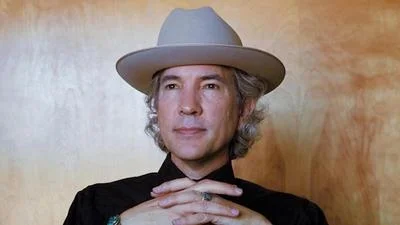On July 22, Mayor Tim Keller was joined by world-renowned architect Antoine Predock to announce plans for the Albuquerque Rail Trail project. Predock is the designer of the project. The project is a 7- to 8-mile multi-use pedestrian and bike trail circling downtown that will connect key destinations in the downtown area. The total projected cost is $80 Million with $40 million already set aside for the project.
As designed by Predock, the Rail Trail will consist of 11 major sections all in the Downtown area from the Rail Yards to the Sawmill District, Old Town, Tingley Beach, the Barela’s neighborhood, and back around in a 8-mile loop. The trail will show major attractions like scenic stops along the Rio Grande, tourist spots, and a unique raised trail area with a plaza beneath for shops and food vendors over by the convention center. It will also have a redone underpass with lighting at Central and 1st Street highlighting the Historic Route 66. Other features include a tree-like, geometric structure wrapping over the bike path, which will be rooted in spaces that could be used for retail or other purposes.
By any measure, spending $80 Million dollars on an 8 mile bike trail and pedestrian walkway is a difficult sell to the general public which is the likely reason Mayor Tim Keller and his administration conveniently did not put it on the ballot for voter approval, especially when it comes to a legacy project the Rail Trail represents to Keller. Keller calling an $80 million bike trail and pedestrian walkway “the largest public works undertaking since we literally built the zoo and the tram” that will transform the city is typical Keller public relations tactics. Keller forgets the $125 Million ART bus project he completed down the middle of central that has destroyed historic Route 66.
City officials said they are working to have the trail fully lit with street lights and security officers. Given the openness and length of the trail, the entire length of the trail will likely become a magnet for crime. It’s not at all hard to envision panhandling, drug dealing, prostitution solicitation, pickpocketing purse snatching and shoplifting at the merchandise vendor stations and the homeless camping along the Rail Trail. At a minimum there will be the need for police to patrol the entire length of the trail and to have it closed down at night like a city park and to prevent illegal camping.
Project architect Antoine Predock places what he and Mayor Keller believe is an iconic Albuquerque image front and center: the tumbleweed. Predock envisions a giant, electric tumbleweed placed at Central Street and the rail road tracks. Predock proclaims the image of a tumbleweed rolling down the road is part of every resident’s experience enshrined in pop culture. Keller became downright giddy with excitement with a grin on his face and a smile in his voice during the July 22 presentation as he talked about the 25-foot neon tumbleweed when he said:
“When this happens, no one will think of Albuquerque without the neon tumbleweed at the intersection of Route 66 and the railroad.”
Spending thousands of dollars on a 25-foot neon tumbleweed at the intersection of Route 66 and the railroad as a symbol for a City falls squarely into the category of “What the hell are they thinking?” Frankly, the use of a 24 foot neon tumbleweed is embarrassing for a city known for its Sandia vistas, the International Balloon Fiesta, Route 66, its history and diversity.
A tumbleweed conjures up images of windswept dust and desolation. It conjures up the images of Albuquerque being nothing more than a dusty and dying little town in New Mexico as tumbleweeds, dirt and debris are swept by the winds through the vacant streets of a once vibrant community.
There are so many other symbols that could be and are reflection of the city as a whole and that can even be whimsical at times. Those images include chile ristras, luminarias, images of the tramway, hot air balloons during a balloon glow, a vintage train, a vintage convertible driving down Route 66, mariachis playing, Indian jewelry, pottery and tribal dancers, hand-carved and painted wooden santos, bultos and retablos, and crosses. Whimsical images of a “big enchilada” and even Bugs Bunny saying, “I should have taken a left at Albuquerque” could be used.
The 25-foot neon tumbleweed is artwork that needs to be scraped as not a fitting symbol of the city.
Pete Dinelli is a native of Albuquerque. He is a licensed New Mexico attorney with 27 years of municipal and state government service including as an assistant attorney general, assistant district attorney prosecuting violent crimes, city of Albuquerque deputy city attorney and chief public safety officer, Albuquerque city councilor, and several years in private practice. Dinelli publishes a blog covering politics in New Mexico: www.PeteDinelli.com.





